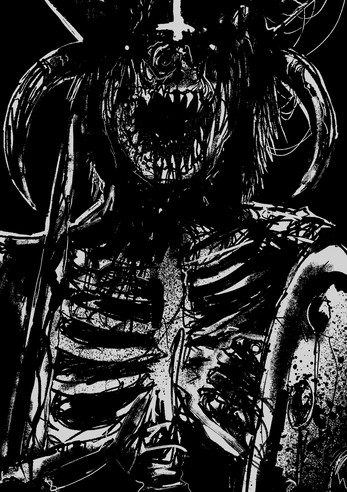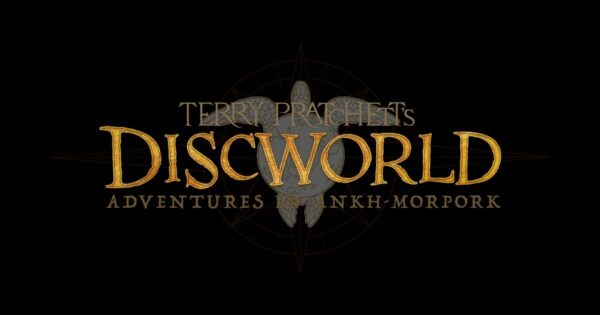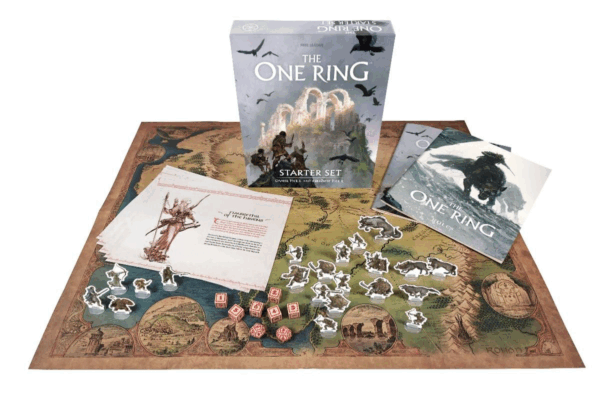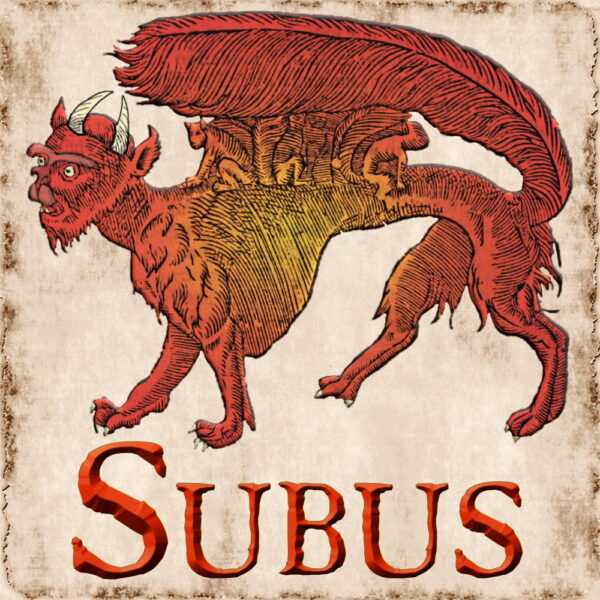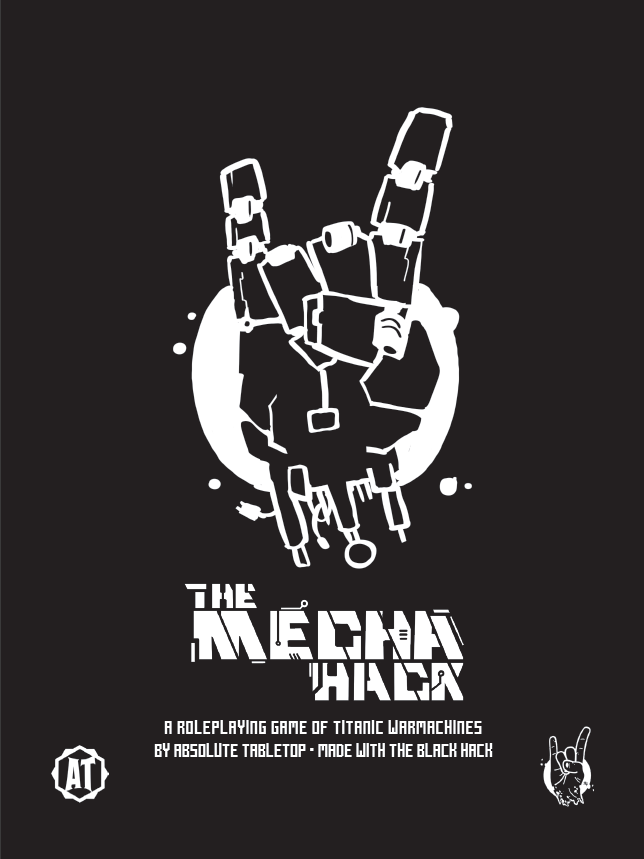
I fell in love with giant stompy robots visiting the Battletech Center for my thirteenth birthday. It seems strange in a modern world of online battle, but once upon a time you had to go to the same location to fight your friends. The Battletech Center went a few steps further by setting each screen inside a massive pod full of booming speakers, toggle switches and cockpit readouts straight out of a Hollywood set.
RPGs looking to explore this genre tend to end up on the mechanically complex side. Mechwarrior, A Time of War, Mekton, Lancer and even my own Camelot Trigger give a lot of space to mecha construction and cool robot gadgets. The Mecha Hack, from developer Matt Click and illustrated by the artist Runehammer, takes the idea in a faster, sleeker direction. It still manages to fit a big fight feel in the core book by offering a small tactical game, a bit of customization and sketched out setting that sets up mech on mech clashes efficiently, along with a shot of Pacific Rim kaiju punching for flavor.
The Mecha Hack, if you couldn’t guess from the name or the look of the book, is based on The Black Hack from designer David Black. The main things this book keeps are the roll under attribute player facing task resolution, resource dice for battle tension and range band combat. The attributes in this case are Power, Mobility, Systems and Presence. The mech is built as the main character, with the pilot played as a smaller component. Players plug together a pilot type and a mech type, choose some unique gear for the robot and are ready to hit the dropship. Heat and battle actions are governed by a reactor die. Push the mech and roll the reactor die. If it rolls low, it shrinks, and if it shrinks beyond a d4, it shuts down. This is a great tactical element that offers a little of the risk vs. reward in the best mecha games. It’s very easy to mutter “come on baby, hold together” whenever a player picks up the reactor die.
Even though the designers make it clear it’s okay to use their game to run one of the worlds mentioned earlier in the article, I enjoyed the factional setup included for Lodestar Alpha. The three human factions are there mostly to let players imagine their favorite type of mecha, whether it’s the industrial horizontal lines of the Terran Collective, the stylized empire of the Aeonic Primacy or the faded nobility of the Neo Dominion. Not only do these factions offer plenty of reasons to fight each other, there’s a greater enemy on the horizon. The Voidmaw are giant aliens that offer the human factions a rare opportunity to band together. They are also the creatures that built the settings FTL travel network which means they can show up anywhere or, if the GM wants to keep things between human factions, a long-dead species that generates whispers and rumors.
What really makes The Mecha Hack sing is the recently released rules supplement. The Mission Manual adds new enemies, new setting info, new random charts and no rules for the GM to pick and choose to use. The optional rules include a little bit of depth for out of mech missions, new pilots and mech types and more downtime options to allow tables to get into drama outside their robots. These rules are great add-ons not just for the default setting, but also allow players to further customize using a different setting with this rules set.
The real value of The Mission Manual lies in the over 40 mission write-ups. Each is a page long which comes complete with a breakdown of what the pilots know going into the mission, three suggestions for big battle set pieces, secondary objectives and unexpected twists to complicate the missions. The adventures have keyword references that make choosing one to suit the mood easy, and there are also discussions on how to connect certain missions as a larger campaign storyline. These write ups are full of great detail for their small size and would be a great use to anyone who needs inspiration for a night of mecha action in any system. The book also includes a discussion on how to modify the adventures further. It’s a great bit of Game Master technique in a few short pages.
Fans of mecha looking for a lot of action without heavy rules should check out The Mecha Hack. Even if the game proves too light, there’s plenty of material that can be repurposed for your favorite giant stompy robot game.
If you enjoyed this review, please consider purchasing the material through the links embedded above. Every little bit to support your friendly local game writer helps.




